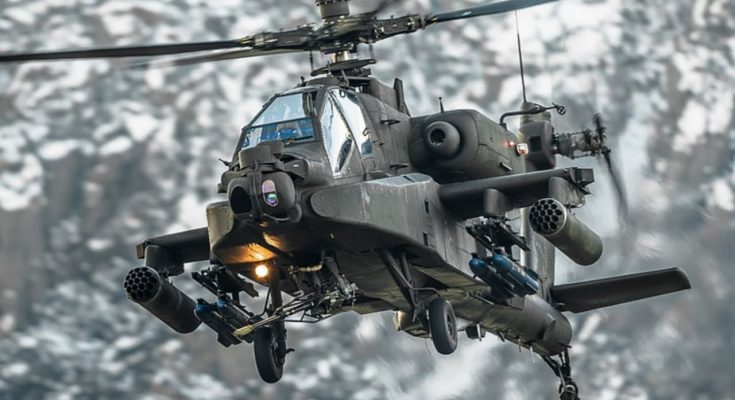The AH-64 Apache is widely regarded as one of the most formidable and feared attack helicopters ever built, not only by the U States Army but by military forces around the world. Originally developed by McDonnell Douglas (now Boeing) in the late 1970s and entering service in 1986, the Apache was designed to provide close air support (CAS) to ground troops, destroy enemy armor, and engage in a variety of combat missions. The Apache’s combination of advanced firepower, survivability, and versatility has allowed it to remain at the forefront of military technology for decades, earning its reputation as the “most feared” helicopter in modern warfare.
One of the defining characteristics of the AH-64 Apache is its devastating arsenal. The Apache is equipped with the powerful M230 chain gun, a 30mm automatic cannon capable of firing up to 625 rounds per minute. This weapon alone provides the Apache with a significant edge in combat, allowing it to engage a wide range of targets, from infantry to heavily armored vehicles. Additionally, the Apache carries an array of Hellfire missiles, which are designed to lock onto and destroy high-value, hardened targets like tanks, bunkers, and other fortifications. The combination of the M230 gun and Hellfire missiles makes the Apache a formidable opponent on the battlefield, capable of taking out virtually any target it encounters.
The Apache’s versatility extends beyond its weaponry. Its highly advanced avionics and sensors enable it to operate in a wide variety of conditions. The helicopter is equipped with a Longbow radar system, which allows it to detect, track, and engage multiple targets simultaneously, even in poor weather or at night. The Apache’s infrared targeting system further enhances its capability to strike targets in low-visibility conditions, ensuring it can carry out missions during both the day and night. These systems provide the Apache with unparalleled situational awareness, enabling it to navigate complex battlefields and make precision strikes while avoiding enemy fire.
Another critical feature of the Apache is its survivability. The helicopter is designed with multiple layers of protection, including composite armor and self-sealing fuel tanks, making it highly resistant to enemy fire. In the event of damage, the Apache can continue to function and return to base, a testament to its durability and the quality of its engineering. This resilience has proven essential in combat situations, where the Apache has often been exposed to enemy ground fire and surface-to-air missile threats.
The AH-64 Apache’s battle-tested performance in conflicts such as the Gulf War, the Iraq War, and the War in Afghanistan further cemented its reputation as the most feared attack helicopter. In the Gulf War, for instance, Apaches proved their effectiveness in destroying Iraqi armored units and providing close air support to ground forces. The ability to operate in a variety of environments and engage both armored and soft targets has made the Apache a critical asset in any conflict.
The Apache’s combination of advanced technology, unmatched firepower, and remarkable survivability ensures that it remains one of the most effective and feared attack helicopters in existence. Whether in conventional warfare or counterinsurgency operations, the AH-64 Apache continues to serve as a powerful tool for the U.S. Army and its allies, proving itself as a cornerstone of modern military aviation. Its enduring legacy as one of the most capable helicopters in history is a testament to the precision engineering and innovative design that has defined its success on the battlefield.



